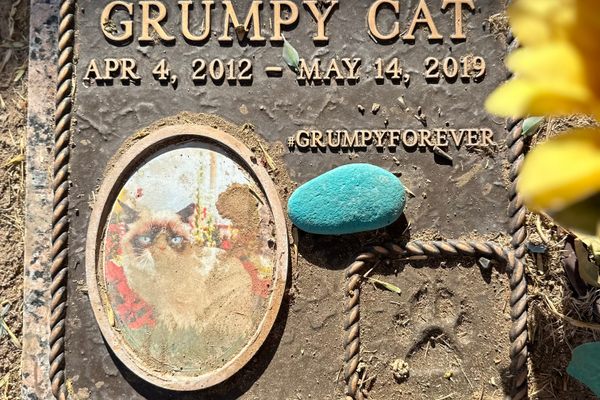About
One of the largest and most advanced tiger enclosures is not in any zoo, but on a university campus. Mike the Tiger, the Louisiana State University mascot, lives across the street from the football stadium in a 15,000 square foot habitat complete with a waterfall, swimming pond, and lush foliage.
The story of how an animal native to Asia became an icon of American college football starts with the Civil War, during which two Louisiana brigades fighting under Robert E. Lee becme known as the tigers. LSU’s first live mascot was not a Bengal tiger, but a black bob-tailed tiger named “Little-Eat-’Em-Up” who did not enjoy watching football, even turning his head away at key moments in the game.
In 1934, LSU students raised $750 to buy a tiger from the Little Rock Zoo, which was named Mike after the then-Athletic Director trainer Mike Chambers, who had led the campaign to bring a live tiger to campus. After serving as the mascot for 20 years, Mike I retired and is now taxidermied and on display at the LSU Museum of Natural Science.
Mike II arrived in 1956, but died of pneumonia less than a month later during a six-game losing streak. Although the official story was that he hadn’t died at all, but was merely having problems adjusting to the excitement, it is believed he was buried secretly beneath a willow tree on the Mississippi River. Another Mike II was quickly bought to replace the dead cub, with officials announcing that he was recovered and ready for mascotting.
After the death of the second Mike II, Mike III reigned over many winning years at LSU. Unique in that he was able to growl on cue to startle the other teams (with the command “Get ‘em Mike”), he died during the only losing season of his lifetime.
Mike IV was donated in 1976 and in 1981, the doors to his cage were broken open by pranksters and the tiger was discovered roaming at the track stadium on campus. Besides attacking a small tree, he did little damage and was subdued with three tranquilizers.
The calm and friendly Mike V followed and served until 2007, when he was replaced by Mike VI. Before each football game, Mike is rolled in a cage (he is never forced into the cage; if he chooses not to go in he remains in his habitat) to outside the opponent’s locker room, so that the opposing players must pass by the tiger on their way to the stadium. Mike then is paraded through Tiger Stadium while cheerleaders celebrate atop his cage.
Update October, 2016: Mike VI passed away on October 11, 2016.
Update August, 2017: Mike VII was introduced to his LSU campus habitat. Originally named Harvey, the tiger was donated to LSU by Florida animal sanctuary Wild at Heart Wildlife Center.
Update January 2017: The tigers will no longer enter the football stadium for games.
Related Tags
Know Before You Go
Visitors can go to the visitor center to get a parking pass for $10 a day or they can try to find meter parking around the enclosure. The guard on duty on the road that leads past the enclosure may let you park for free if you tell them you are there to visit Mike.
Community Contributors
Added By
Published
September 1, 2010
Sources
- The Official Website of LSU Athletics: LSU's Live Tiger Mascot, Mike VI: http://www.lsusports.net/ViewArticle.dbml?DB_OEM_ID=5200&ATCLID=177271
- Tiger Weekly: LSU Museum of Natural Science: http://tigerweekly.com/print/07-28-2010/15271/lsu-museum-of-natural-science
- LSU Sesquicentennial: http://www.lsu.edu/lsu150/stories/mike.shtml
- LSU’s live tiger mascot, Mike VI, passed away today, Oct. 11.
- https://www.washingtonpost.com/news/early-lead/wp/2017/08/21/lsu-introduces-its-new-live-tiger-mascot-mike-vii/?utm_term=.a453dd4f15c5
- https://www.sbnation.com/college-football/2017/1/19/14328406/mike-the-tiger-mascot-lsu-stadium-cage


















































